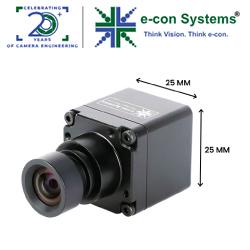Effect of Robotic Driverless Vehicles on Auto Insurance Costs
Upcoming Tradeshow, Conference & Exhibition Summary - August, September & October
Parallella: $119 Parallel Computing Platform with 16-core Epiphany chip
Machine Vision Technology Ensures Product Quality and Traceability at Del Monte Foods
Raspberry Pi Model B+
Where will the 3D Printing Industry Cluster?
Intro to Shape Memory Alloy Actuation Using Flexinol
RobLog Industrial Demonstrator Entrance for Robotic Logistics
Interview with e-NABLE Founder Jon Schull
BugJuggler: Project to build 70ft tall robot that juggles cars
A Robot Valet Will Park Your Car at This German Airport
Dissembling a 1980s Kuka Robot
Intel's 3-D Printed Robot "Jimmy"
More For Less
Carl Dekker of Met-L-Flo Discusses Challenges and Opportunities Arising in Additive Manufacturing
Records 3196 to 3210 of 3741
First | Previous | Next | Last
Featured Product

3MP HDR IP69K Camera for Robotics & Autonomous Vehicles
Robotics and Automation - Featured Company

